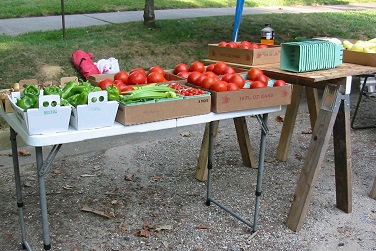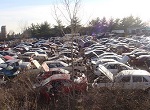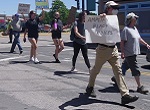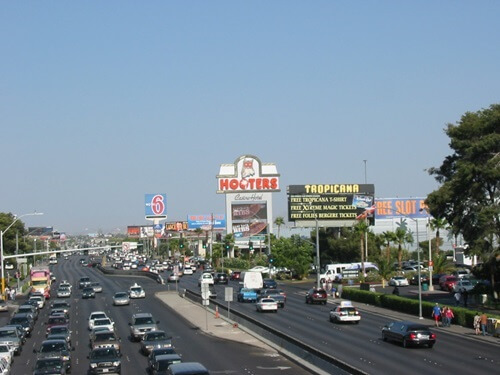Public Health and Community Development Now Are Converging
Last Updated: August 26, 2022
Public health and community development or activism play mutually supportive roles. A community’s physical layout, social equity and efficacy, and wealth impact public health by helping to determine convenience and access to opportunities for exercise, nutritious food, exposure to nature, and transportation to medical appointments.
In contrast, research shows negative health outcomes for households and neighborhoods that routinely experience violence, environmental hazards and pollutants, and stress due to discrimination, inadequate housing, and poor neighborhood quality.

Curiously to
some, the origins of zoning in the U.S. lay in a public health concern about
lack of access to sunshine and fresh air in crowded big city conditions.
Somehow the fields drifted apart.
Writing about public health and community development in the same sentence might have been considered a fool’s errand in the U.S. 25 years ago, but now such conversations stir excitement and new collaborations in many neighborhoods and cities. Increasingly the professionals in both fields have recognized a potent and intricate web of interconnections between public health and community development, and city planners and neighborhood leaders have followed suit.
First, we will look at five major ways that planning and community development decisions impact health, and in a final section, we consider what a public health approach might offer civic leaders, neighborhood associations, and community development corporations.
During the coronavirus pandemic, we have noticed that many neighborhood residents don’t have much of an appreciation at all for how public health works. But public health had a history and positive track record long before we were worried about masks and COVID-19 vaccinations. In contrast to what your own physician does when hopefully they see you as an individual, a public health doctor focuses on what happens to groups of people (populations) and does not see individual patients, at least when assuming their public health role.
You, our readers, are activists, so we will frame this in terms of how your enlightened community development actions can contribute positively to public health. As professional planners, we notice that residents are really enthusiastic about the aesthetic benefits of more green space, and they often want to live close to walkable business districts where restaurants, bars, and shops can be found.
Let’s look more closely at what policy wonks that you meet are likely to call the social determinants of health. But we predict that your residents will just enjoy feeling both close to walkable destinations and appreciate the beauty of extra little bits of green space.
1. Exercise Opportunity Shows the Tie Between Public Health and Community Development
Some of you have an expensive or budget gym membership, but free moderate exercise in the form of walking near your home can't be beat in terms of accessibility. I live where I can walk to the grocery store, hardware store, schools, the post office, the library, church, a big box discount store and big box hardware store, city hall, gift shops, and fancy restaurants and diners and four pizza joints—so I do. When I have to take my car in for service, I can walk home from my choice of eight different establishments and wait for the call saying my work is done.
Such a lifestyle may be unremarkable in European cities and elsewhere in the world, but many Americans do not have that choice. Increasing walkability is a worthwhile community goal, because it not only provides incidental exercise, but also helps break down social barriers, invites social interaction, brings customers to neighborhood businesses, prevents crime, increases street vitality and sheer fun, and increases awareness of neighborhood assets and problems.
Based on our experiences as planners, we should add that limited measures to increase green spaces usually also enhance the beauty and serenity of neighborhoods. When opportunities present themselves, we can and should work toward community designs that feature green strips between street lanes, neighborhood parks or green spaces at the end of a vista, or homes that front directly on a green with alley garages behind them. Some of these can be retrofitted into existing neighborhoods too. For more ambitious ideas, many of which can be integrated into built-out neighborhoods with careful planning, we suggest that you look at our list of greenway planning pages on this website.
For more detail on reducing residents’ dependence on cars, see our pages on walkability, traffic calming, and parklets.
Parks also provide incidental and purposeful exercise, and help children build their appreciation of nature and physical activity. Of course safe parks are a smaller sub-set of all parks, so community development activities must include both ridding parks of any systemic crime problems and assuring regular clean-up of parks, using volunteer labor if necessary. Some cities have more tiny parks, often called pocked parks and sometimes required when subdivisions were established, than they can care for, but a number of cities do not have enough public parks. If your neighborhood lacks parks, you could approach your mayor about joining the 10-Minute Walk initiative, the goal of which is a safe, quality park within a 10-minute walk of every household.
Another aspect of parks as a contributor to public health comes into play when we recognize the mental health value of exposure to nature. This American Psychological Association article details the benefits of time in nature as improved mood, cognitive functioning, and mental health.
2. Nutritious Food as a Public Health Issue for Neighborhoods
In many societies and places, cheap food is not healthy food. Fried dough and fried sausage are common on several continents. The public health problem occurs when a large percentage of the population relies on an unvaried diet of such foods that are unhealthy when used as staples.
In low-income neighborhoods in the U.S., a condition called a food desert has developed. This refers to a situation in which there are few or no stores that sell a variety of healthy foods within walking distance or a reasonable transit journey. Instead residents rely on candy, chips, white bread, and hot dogs from the local convenience store or gas station to tide them over until an inconvenient trip to a full-service grocery store can be arranged. Even the grocery stores in such neighborhoods often highlight low-nutrition foods at the expense of healthy proteins and fresh produce.
Those who work to revitalize neighborhoods in the name of community development need to give careful thought to improving public health simply through increasing the likelihood of a good diet and an understanding of nutrition. When necessary, organize a farmers market that accepts SNAP (a federal government food assistance in the U.S.) payment or a mobile grocery truck that visits the neighborhood one or more times a week stocked with healthy options. Nutrition and cooking classes may be worthwhile short-term programming for a neighborhood association or other nonprofit community organization.
Assuring high quality public transportation routes to grocery stores is a related goal, but one requiring much more metropolitan cooperation and funding. Neighborhood associations should try explaining to local transit agencies where they would like to travel for groceries though.
3. Access to Jobs As a Public Health and Community Development Issue
OK, some of you might think this is a mental stretch. But we are speaking narrowly of two aspects of access to jobs: (1) feasible transportation options for reaching adequately-paying jobs and (2) job availability for persons with the skill and education level common in a neighborhood. If there is a mismatch between the location of jobs and the location of qualified workers, this is a community development issue writ large. Similarly, if jobs available do not fit the skills of the workforce, personal income will suffer.
But the big point for this article is that if people cannot reasonably afford the time or the money to reach a job providing enough income for their household, research shows public health outcomes are poor. In fact the summary of a research article published by Health Affairs states that promoting economic equity and reducing economic disparities has a positive impact on health.
All of you who have been active in the civic arena for a while have figured out that people with good jobs support local shops and commercial district revitalization, have more time and money to become active in their block club or neighborhood association, maintain or even renovate their homes, and take more interest in local schools and civic endeavors, but are less likely to engage in crime. Now we also should consider the need for practical travel to a quality job appropriate to a worker's skills as a local public health imperative.
Planners and neighborhood groups should advocate for economic development projects that fit their workforce, while also seeking opportunities to increase skill levels when necessary. You may need to lobby your community college or school system about initiating relevant and market-oriented skill training; probably you will need to find some allies to accomplish this change.
But of equal importance is a transportation system that works for pedestrians, bicyclists, drivers, and those who prefer or rely on public transportation. Based on your hunch about the needs, you may need to dig into how transportation planning in general works, or how bikeable communities expands the practical distance range for job seekers who may prefer or rely on that transportation mode.
Thus far we have not written about access to medical appointments explicitly, but everything we have said about reasonable commutes to jobs also applies to doctor’s visits. While medical access obviously depends heavily on the quality and cost of health care systems, it is often surprising to neighborhood leaders to learn about the prevalence of missed appointments, and even discouragement about seeking medical help at all, due to transportation woes among lower-income groups.
Missed appointments mean that prenatal care may be slack, treatment for and monitoring of chronic conditions is unavailable, and serious illness goes undetected.
4. Violence as Both a Community Development and Public Health Issue
In many urban neighborhoods, crime, violence in general, and gun violence in particular in the U.S. have reached such proportions that they are rightly considered a public health issue. War and civil conflicts throughout the world obviously have huge public health implications as well, including the secondary impacts when refugees flee terrible situations and endure inadequate shelter, sanitation, food, and clean water for days, weeks, or years.
If we think of the community development needs of urban neighborhoods, a measure of perceived safety from violence will be necessary before a neighborhood can maintain a strong market for its housing. Certain areas that are desirable because of proximity to downtown, cultural districts, universities, and architectural or natural beauty may escape the direst consequences of being seen as a high-crime area, and may enjoy a medium market desirability that may even lead to high prices and gentrification. However, no neighborhood will reach its full potential until perceived risk of violence is low.
As we detail in the crime prevention section of this website, some decision-making that lies squarely under the community development umbrella can actively influence the incidence of crime. Mandating or incentivizing crime deterrence in design may be the best example. Other violence reduction tactics are well within the capability of neighborhood associations, such as pushing for community policing or organizing court monitoring programs.
Quality public services, a robust job market, maintenance of the housing stock, and looking like someone cares enough about the neighborhood to tend to beautification all help to prevent housing decline and then abandoned buildings that invite violence as well.
5. The Elephant in the Room: Concentrated Poverty
So far we have pretty much tiptoed around the big truth here, which is that when poverty is concentrated in certain neighborhoods and wealth in others, public health almost always suffers. In addition to points we have already alluded to on this page, consider the following factors in why this is so.
1. Concentrated poverty leads to disinvestment (a term professionals use to mean lack of investment) in housing, whether from inability to afford repairs and upgrades, or from a rational decision that a homeowner is unlikely to recover costs upon sale. Lack of repairs often leads to unhealthful conditions, such as unsafe plumbing, uneven or even missing heating and cooling, poor indoor air quality, persistence of lead paint or pipes, and unsafe steps or porches. Of course when the poverty is concentrated in a particular neighborhood, neighbors make the same decisions, leading to a perpetuation of the cycle of poverty as housing values stay low.
2. Concentrated poverty is associated with higher rates of crime, especially of the violent kind.
3. The crime in turn is associated with a logical disinterest in walking for exercise or transportation, or even playing or participating in sports in a park.
4. Concentrated poverty is associated with worse educational outcomes than for demographically similar students who are living in a more middle-income or mixed-income neighborhood. This relationship is important to public health because more educational attainment is correlated with higher earnings, access to better health care, better ability to research and evaluate health information, and of course better capacity for pay for nutritious food and health aids not covered by insurance, such as sunscreen, treadmills, electric toothbrushes, vitamin supplements, and myriad others. When income is insufficient, diagnostic tests, dental visits, and mental health consultations may be neglected for financial reasons. All this is true at the level of individual households, to be sure, but in the case of residents of an area of concentrated poverty, social interaction with neighbors may reinforce this behavior even if an individual household could afford to do better.
In short, neighborhood-level community development activities, broadly defined as we do on this website, need to provide solutions to concentrated poverty in order to have a hope of improving public health and reducing the drastic disparities in health between populations in different parts of a metropolitan area. Delving into potential solutions would take this article way off track, but do visit that page if you live in a neighborhood of mostly low-income folks.
Three Ways a Public Health Approach Might Benefit Community Organizations and Leaders
Now we come to the question of how community organizations integrate the public health community, and their own growing awareness of public health, into their ongoing activities and programs. We see three big agenda items for your neighborhood association to consider.
1. You might attract new members, or encourage current members to become more active, if you make a good case for the aspects of this community development-public health relationship that are relevant to your particular location. Some people will be more interested in this topic than the traditional emphases on housing, beautification, business district, or crime issues.
2. One or two programs each year on a public health topic may lead to exciting new partnerships. Those of you who live in the shadow of a giant medical complex that pretty well ignores you need to read up on the awesome power of medical facilities to become "anchor institutions" for your neighborhood, and then start featuring that hospital’s community-facing public health staff at your meetings occasionally, to try to leverage that small relationship into a partnership. If those invitations go unanswered, try a different fitness-related tactic, such as potentially sharing responsibility for putting together one or more community runs, 5K walks, or health fairs or screenings. If you need to understand more about the anchor institution notion, check out this article about involvement of the medical community in community development.
3. Lastly, in some locations, public health or medical organizations are an important source of funding for projects that can be inked with health. This article should have given you several ideas for initiatives that would interest local foundations or hospital complexes near you. Non-profit hospitals in fact have a mandate to provide what is known as community benefit, and you may be surprised that your big hospital with the outrageous bills actually is a legal non-profit. Many of them argued that providing free care was their community benefit, but in recent years regulators cracked down on that, so be bold about approaching them to support neighborhood activities with funding and even with their employees as volunteers.
In this long article, we still have only scratched the surface. Start with these suggestions, and over the course of a few months, your ideas will multiply.
Check Out the Other "Big Ideas" on This Website
- A Good Community ›
- Community Challenges, Common Topics & Concepts › Public Health and Community Development
Join GOOD COMMUNITY PLUS, which provides you monthly with short features or tips about timely topics for neighborhoods, towns and cities, community organizations, and rural or small town environments. Unsubscribe any time. Give it a try.





